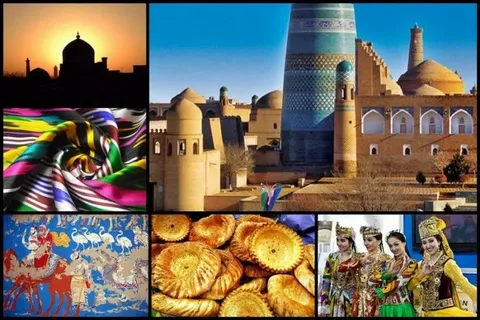Türk Idla: Meaning, Origins, Future of a Cultural Movement
Türk Idla is a mysterious phrase that has recently gained attention on the internet. Many people search for its meaning and wonder whether it is a tradition, a movement, or just a symbolic term. While the word “Türk” clearly refers to Turkish culture and people, the word “Idla” does not have a direct translation. Instead, it is seen as a creative or symbolic expression that combines tradition with modern thought.
Some believe Türk Idla represents a new digital identity for Turkish youth, while others see it as a way of keeping heritage alive in today’s fast-changing world. Because of its open meaning, Türk Idla has become a topic of interest in cultural blogs, social media platforms, and influencer circles.
The Origins and Word Roots of Türk Idla
The origins of Türk Idla are not completely clear. Linguistic experts suggest that “Idla” may come from older Turkic words related to order, ritual, or discipline. In this sense, Türk Idla might mean “Turkish order” or “Turkish way of discipline.” Some blogs explain that it could also be a newly created word meant to represent modern Turkish creativity.
No official historical record mentions Türk Idla directly. However, its popularity in online discussions shows that people find value in connecting ancient identity with new forms of cultural expression. In this way, the word acts like a bridge between history and modern digital life.
Cultural Significance of Türk Idla in Turkish Identity

Cultural ident ity is very important in Turkey, where tradition and modern life exist side by side. Türk Idla is sometimes described as a symbol of this balance. It reflects the pride of being Turkish while also embracing global ideas. Just like Turkish food, music, and art mix old and new elements, Türk Idla represents a flexible identity.
In cultural discussions, Türk Idla is seen as a way for young people to remain connected with their roots. It helps them feel proud of who they are while still engaging with global trends. This dual identity makes Türk Idla both meaningful and inspiring.
Türk Idla in Modern Digital Movements
Digital platforms have become the main space for cultural growth today. Türk Idla has started appearing in blogs, forums, and social media posts as a keyword that symbolizes modern Turkish creativity. It is often used in discussions about digital art, content creation, and even influencer marketing.
For many young people, Türk Idla represents how culture can survive in the digital age. By reshaping traditional values into creative content online, Türk Idla shows that culture is not lost but transformed. This makes it a strong part of modern digital movements in Turkey and beyond.
Symbolism and Philosophical Interpretations of Türk Idla
Philosophically, Türk Idla is often seen as a symbol of harmony between past and present. Some interpret it as a reminder that cultural values should not be forgotten even when new ideas arrive. Others believe it represents the inner discipline and strength of Turkish people in the face of modern challenges.
In symbolic terms, Türk Idla can be described as a “concept of balance.” It is not tied to one meaning, which makes it powerful. Like many cultural expressions, its strength lies in how people choose to understand it.
Türk Idla and Its Role in Influencer Culture

Influencers in Turkey are already using cultural references to connect with their followers. Türk Idla could become a new way of branding content that highlights Turkish values in a modern setting. By using this phrase, influencers can show that they respect tradition while staying trendy.
This makes Türk Idla not only a cultural idea but also a marketing tool. Brands that want to connect with Turkish audiences may use this concept to create campaigns that feel authentic and relatable.
Social Media Trends Around Türk Idla
Social media has played the biggest role in spreading awareness of Türk Idla. Hashtags, short videos, and memes often include the word as a symbol of creativity and pride. Because its meaning is open, users can shape it to fit their own personal stories.
On platforms like Instagram, TikTok, and Twitter, Türk Idla is becoming a way to celebrate both individuality and cultural belonging. This flexibility is what makes it appealing and trendy among young users.
Applications of Türk Idla in Art, Business, and Education
Türk Idla is not just a cultural phrase—it can inspire new directions in many fields. In art, it can motivate designers and creators to combine traditional Turkish patterns with modern styles. In business, companies can use it as part of their branding to appeal to local pride. In education, it may encourage students to explore their heritage while staying connected to global knowledge.
These applications show that Türk Idla has the potential to grow beyond a phrase and become a practical cultural concept.
Challenges and Misconceptions About Türk Idla
One of the biggest challenges with Türk Idla is the lack of clear definition. Because it is not officially documented in history or language, some people see it as “just an internet trend.” Others misunderstand it as being only about influencers or fashion.
Another challenge is misinformation. Since many blogs repeat similar content without evidence, it becomes difficult to separate fact from speculation. This creates confusion for readers searching for reliable information.
Why People Are Searching for Türk Idla Today

The main reason for the popularity of Türk Idla is curiosity. People love exploring new terms, especially when they mix cultural heritage with modern meaning. Search trends show that audiences are drawn to the mystery behind this word.
Many also believe that Türk Idla offers a new way of expressing Turkish pride. Instead of only relying on traditional symbols, it brings something new to the digital age.
The Future of Türk Idla: Tradition Meets Modernity
Looking ahead, Türk Idla could evolve into a strong cultural brand or digital identity. As influencers, artists, and brands adopt the concept, it may gain more visibility worldwide. Its future depends on how people continue to use and define it.
If it is embraced as a movement, Türk Idla could stand for a generation of Turks who are deeply rooted in their culture but open to innovation. This makes its future both exciting and unpredictable.
Conclusion: Is Türk Idla a Concept, Culture, or Movement?
Türk Idla cannot be defined in a single way. It is not only a word but also a concept that combines heritage, creativity, and modern digital life. Whether it becomes a long-term cultural movement or remains a symbolic trend will depend on how people continue to use it. What is clear, however, is that Türk Idla has already sparked curiosity and conversation. It reflects the desire of people to celebrate tradition while embracing the future.
FAQs – Türk Idla
What is the exact meaning of Türk Idla?
Türk Idla does not have a single fixed meaning; it is often described as a mix of cultural identity, symbolism, and digital expression.
Is Türk Idla a historical concept or a modern trend?
It seems to be both—some sources link it to old cultural roots, while others connect it with new online and influencer movements.
Why is Türk Idla trending on social media?
Because people are curious about its unique combination of Turkish heritage and modern digital culture.
Is Türk Idla related to influencer marketing?
Yes, many blogs describe it as a rising trend in Turkish influencer and digital identity culture.
Does Türk Idla have any connection with art and business?
Some interpretations suggest it could inspire creativity in art, design, branding, and education.
Is Türk Idla real or just a symbolic term?
It’s mostly symbolic for now, but it is gaining recognition as a cultural and digital movement.
What makes Türk Idla important for the future?
Its importance lies in blending tradition with modernity, showing how cultures can adapt in the digital age.
Related Post:

